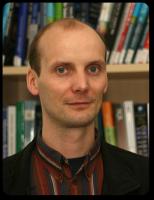Abstract
Networks portray a multitude of interactions through which people meet, ideas
are spread, and infectious diseases propagate within a society. Identifying the
most efficient "spreaders" in a network is an important step to optimize the
use of available resources and ensure the more efficient spread of information.
Here we show that, in contrast to common belief, the most influential spreaders
in a social network do not correspond to the best connected people or to the
most central people (high betweenness centrality). Instead, we find: (i) The
most efficient spreaders are those located within the core of the network as
identified by the k-shell decomposition analysis. (ii) When multiple spreaders
are considered simultaneously, the distance between them becomes the crucial
parameter that determines the extend of the spreading. Furthermore, we find
that-- in the case of infections that do not confer immunity on recovered
individuals-- the infection persists in the high k-shell layers of the network
under conditions where hubs may not be able to preserve the infection. Our
analysis provides a plausible route for an optimal design of efficient
dissemination strategies.
Description
Identifying influential spreaders in complex networks


